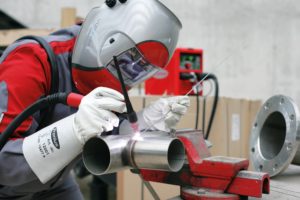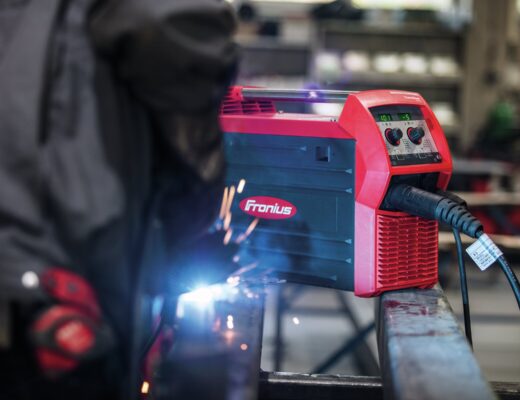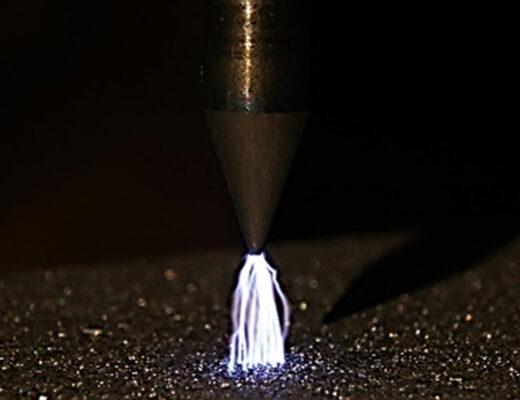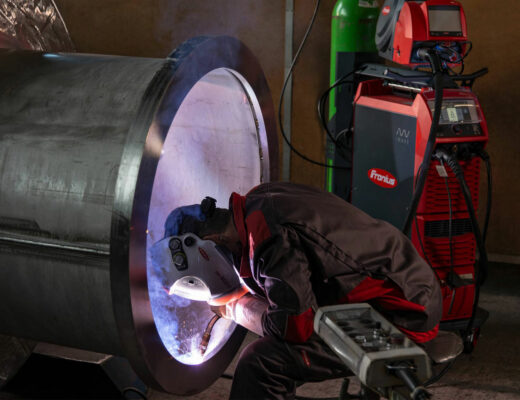Occupational safety/worker protection is the result of all measures and activities aimed at safeguarding the life and health of employees when carrying out their professional duties. This ranges from personal protection to health measures (e.g. noise or psychological stress) through to protective equipment, such as welding helmets. The key task for protective welding equipment is to protect the eyes and skin from glare and burns, and to protect the respiratory organs from harmful particles, dust, and vapors.
Protection against Optical Radiation
Did you know that intense UV radiation can cause irreparable damage to the retina?
Arc welding emits radiation with dangerous levels of UV. This can damage unprotected areas of skin; the eyes are particularly affected here. This could result in anything from conjunctivitis to blinding. However, protective equipment in line with requirements can help here. Alongside a welding jacket, trousers, gloves, and safety shoes, having the right welding helmet is a must. The emphasis here is on “must” as many welders are somewhat careless, although the helmet is the only thing that can protect them from heat, sparks, and radiation.
Optimally Configured Welding Helmets Protects Against Glare
There is often no ideal solution for adjusting the glare protection to the brightness of the arc. Many welding helmets need to be manually adjusted to the darkness level by the user. The welder then selects a comfortable level of protection for all welding tasks. This is very tiring for the eyes and can damage them in the long term. Welding helmets that automatically adjust to the light intensity and thus provide the user with the optimum working conditions represent a novel solution to this problem.
Protection for TIG welding – Often Underestimated
At first glance, TIG welding is a process that is low in harmful substances; however, it can pose health risks due to the high arc temperatures and the resulting irritant gases. This is another area where the appropriate protective clothing can help.
The Tungsten Inert Gas welding process is a fairly complex welding process that generally requires a good level of training. The welder has to guide the welding torch with one hand, while the other hand applies the filler metal. This not only requires a measure of coordination, but also a steady hand. Despite the welding process being low in harmful substances, it does, nonetheless, produce irritant gases that can cause nausea and headaches. This automatic welding helmet with a fan-filter unit provides a constant flow of fresh air and is therefore the ideal safety accessory. This allows the welder to concentrate fully on the welding task and provides them with the best possible protection for the duration of the process. TIG welders, in particular, also need to ensure they have the right welding gloves due to the high level of manual expertise required for TIG welding. Thin material, usually nappa leather, with a high resistance to heat ensures optimum dexterity when welding.
You can find out exactly why TIG welding is particularly suitable for high-quality connections, in our blog post.
Professional welding is characterized not only by technical skill but also by optimal occupational safety during use. Fronius automatic protective welding helmets help contribute to this, ensuring flawless vision and optimum eye protection when welding. Only in this way can the best possible welding results be achieved without impairing user’s health. This is because only welders who have perfect vision before, during, and after welding will be able to achieve the desired results and stay healthy.
 Perfect Welding Blog
Perfect Welding Blog






No Comments